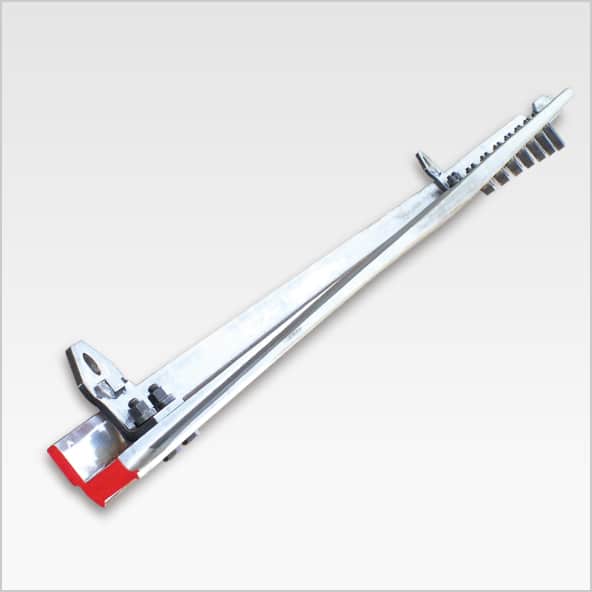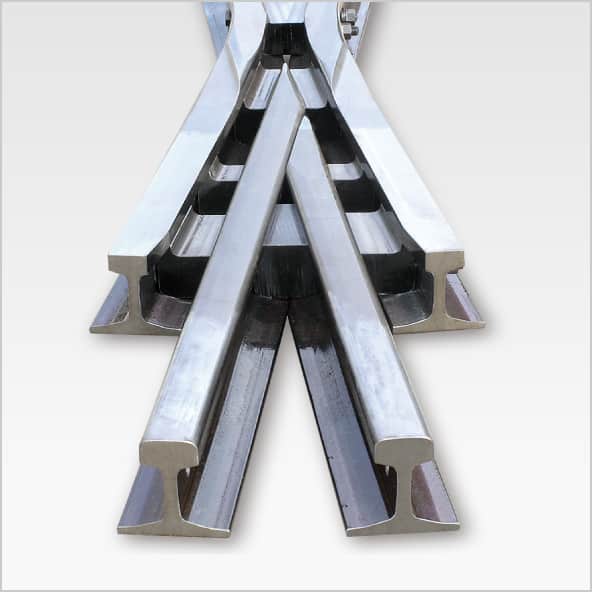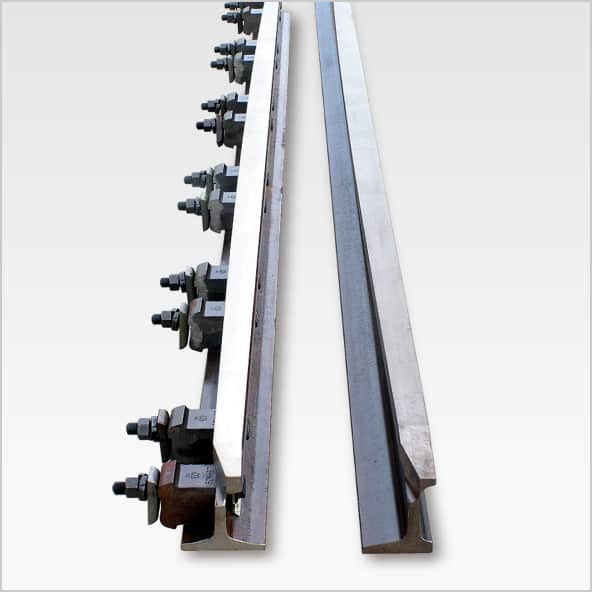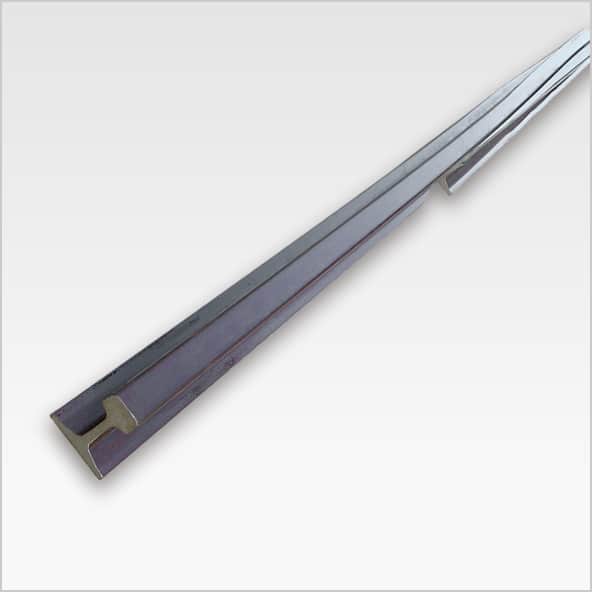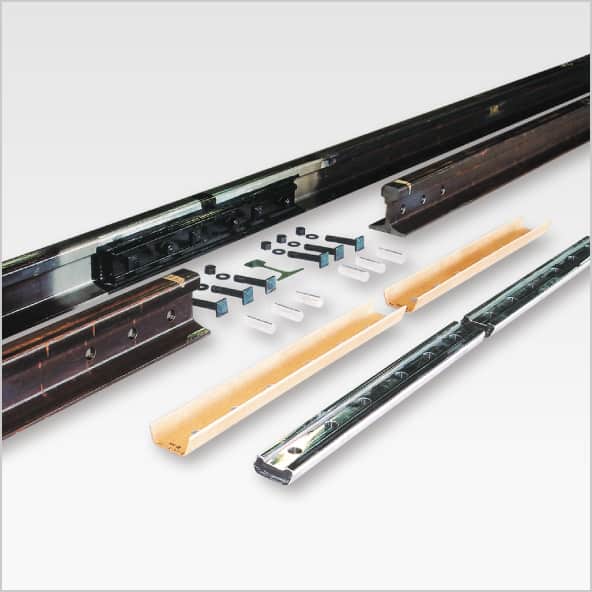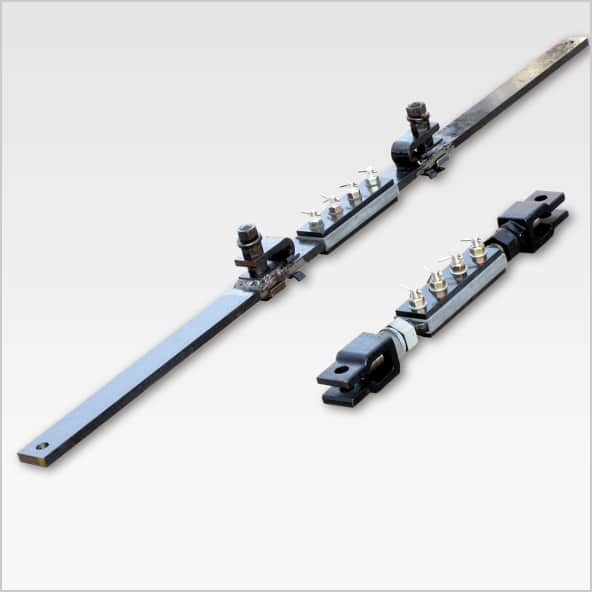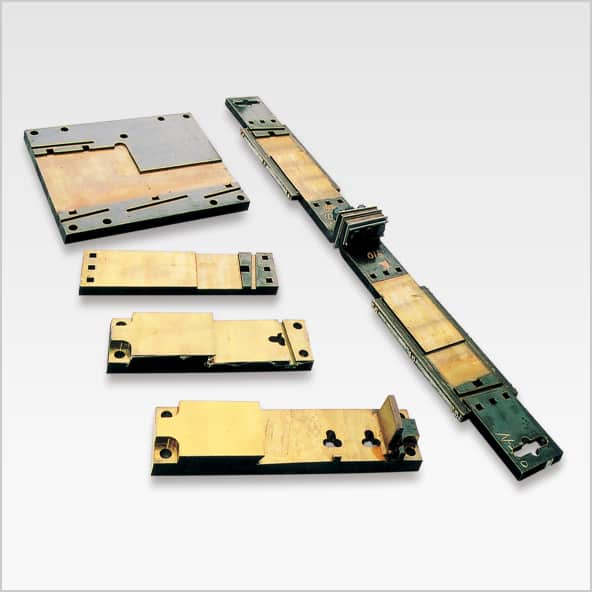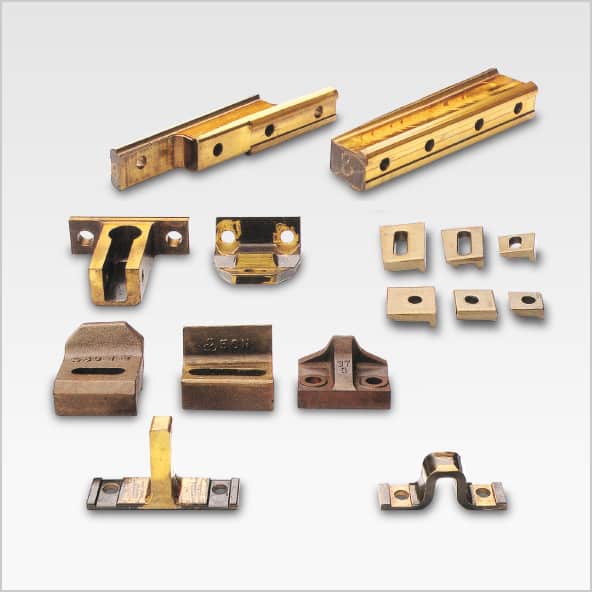Yamanaka Group
Business Fields
Main Business Lines
Kanto Bunkiki manufactures and sells a wide range of products that conform to the standards of many railway companies. These include turnouts for railways and the rails and parts that comprise them, as well as expansion joints, glued-insulated joint rails, junction rails, and derailment prevention guards.
We also offer our customers comprehensive and consistent support covering everything from design, including designing new turnouts and surveying installed turnouts, and manufacture to after-sales service.
Shop-Assembled Turnouts
Shop-Assembled Turnouts
This type of order is suitable for newly laid turnouts, or the replacement of an entire turnout. For a shop-assembled turnout order, we source all the required materials from the rails and base plates to the various other parts and railroad ties. First we temporarily assemble the turnout at our factory, and mark each part with numbers and colors. Then we disassemble the turnout, package all of its parts, and ship the order to the customer. These markings make it easier for the customer to correctly and quickly assemble the turnout at the installation site.
Flash Butt Welding Manganese Crossing
Flash Butt Welding Manganese Crossing
A flash butt welding manganese crossing is used to increase the speed of railways, reduce the maintenance work for turnouts, and lessen the noise output. By using the flash butt welding method for manganese crossings, which are usually quite difficult to weld, the rails can be seamlessly welded to the crossing with no joints remaining. This welding techniques comes from overseas.
V-Shaped Glued-Insulated Joint Rail
V-Shaped Glued-Insulated Joint Rail
V-shaped glued-insulated joint rails are used to lessen the noise output, limit the amount of flaw generated on the rail head, and reduce maintenance work. This type of rail is manufactured by shaping a glued-insulated joint rail head into a v shape.
Anti-Friction Tongue Rail
Anti-Friction Tongue Rail
Anti-friction tongue rails are used to reduce the cost of maintaining the point section of rails. We have manufactured a tongue rail with even better abrasion resistance, which surpasses the performance of tongue rails that have so far been slack-quench (SQ) treated to be more wear resistant. These tongue rails have notably improved abrasion resistance on the tips.
Roller Base Plate
Roller Base Plate
Roller base plates are used to reduce maintenance work such as cleaning the points and oiling the base plate sliders, and to decrease the tongue rail’s switch force. It is manufactured by inserting a roller cassette into a point base plate.
Derailment Prevention Guard
Derailment Prevention Guard
This guard uses angles to prevent derailment on general tracks.
We offer an extensive range of derailment prevention guards to suit a variety of rail types and track structures.
-
Tongue Rail
Tongue Rail
Tongue rails are used in the point in a turnout where the track diverges. These are switch rails with a pointed head. A high level of precision is required in processing tongue rails, as they come into contact with the base rail and are used to smoothly guide the train’s wheels.
-
Crossing
Crossing
Crossings are used in the part of the turnout where the gauge lines intersect. We manufacture a variety of crossings including assembled crossings that are made from processing rails and assembling them with bolts, spacers and other parts, as well as moveable k-shaped crossings and run-over crossings.
-
Guard Rail
Guard Rail
Guard rails come into contact with the back of the wheel to guide it. These rails are mostly used in conjunction with fixed crossings. These rails come in various shapes and dimensions according to the number of turnouts and type of guards used. We can offer customers a variety of guard rails to suit their needs.
-
Expansion Joint Rail
Expansion Joint Rail
Expansion joint rails are placed at the start and end points of long rail intervals. These are rail joints that can adapt to large expansions and contractions in the rails due to temperature changes. Expansion joint rails diagonally overlap and connect to the receiving rail and tongue rail, so they need to be processed with extreme precision. These rails come in variety of types including straight and curved rails. We can offer customers a variety of expansion joint rails to suit their needs.
-
Glued-Insulated Joint Rail
Glued-Insulated Joint Rail
Glued-insulated joint rails are rail joints used in the insulated points of a track’s circuit, mainly at long rail intervals. Insulation is inserted in between the butt rails, and the rails and glued-insulated fish plates are bonded using an insulating adhesive. This product requires powerful adhesive strength and electrical insulation properties, so it is manufactured in a controlled environment away from where turnouts are produced.
-
Switch Rod, Stretcher Bar
Switch Rod, Stretcher Bar
Switch rods are attached to tongue rails and moveable rails, so as to connect these rails to the switch devices. Stretcher bars connect the left and right tongue rails, so as to lessen the sprawl of the tongue rails as they switch. Switch rods and stretcher bars are important parts used in the switch of tongue rails and other functions. We manufacture these products in a variety of shapes and dimensions to suit the types of points used.
-
Base Plates
Base Plates
We use steel sheets to make parts in numerous shapes and dimensions, which we then use to manufacture a wide range of base plates for variety of purposes. These include base plates used to support multiple rails in turnouts made from points, crossings and guards, floor plates used to fix in place turnouts and switch lock devices, and tie plate.
-
Other Parts
Other Parts
We manufacture the numerous parts used in turnouts, in a variety of shapes and dimensions. These include filler and switch rail stop to keep space between rails, Stretcher bar brackets to attach switch rods and stretcher bars to tongue rails, and washers and rail braces to fasten rails to base plates.
- TOP
- Business Fields


